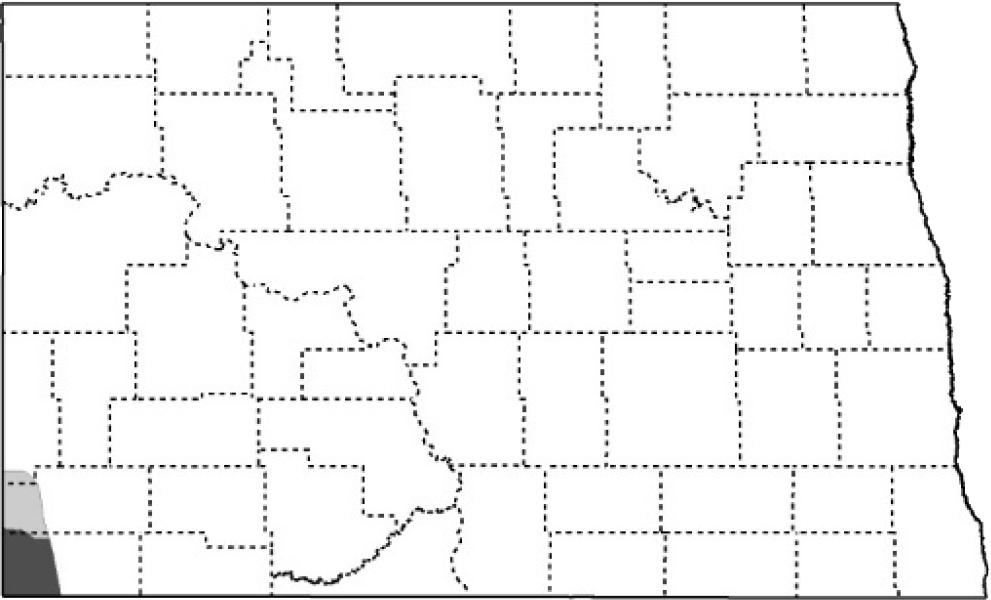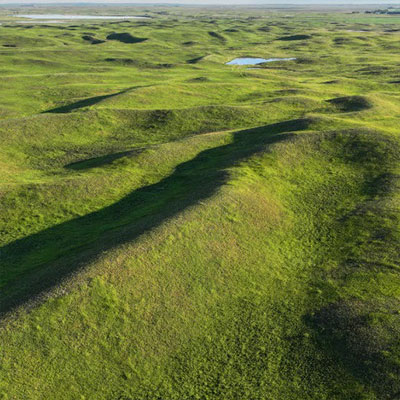Greater Sage-Grouse

NDGF
L 28”, WS 38”, 6.3 lb. The largest of North American grouse species, males are dark brown overall with white breast, pointed tail, and yellow above eye.
Status in North Dakota
Year-round resident. Peak breeding season early April to early July.
Note: While considered a "game" species in North Dakota, the hunting season for greater sage-grouse is closed indefinitely.
Reason for SWAP Designation
Regionally and globally imperiled (SGCN a.).
The Greater Sage-Grouse is declining precipitously, and the population has decreased 67% since 1970.
The sage-grouse range has contracted substantially in North Dakota and in 2024 there were two remaining active leks.
This species is at imminent risk of extirpation from North Dakota.
Threats
Loss and degradation of big sagebrush habitat.
The quality of remaining sagebrush has declined due to overgrazing, fire suppression or excessive fire, invasion of exotic plants, and fragmentation.
Classified as climate-endangered, Greater Sage-Grouse is projected to lose more than half of its current distribution by 2050, with no net gains of new areas (Audubon).
Disturbance to leks and nesting sites from direct and indirect human activity.
Sage-grouse may lack resistance to West Nile virus.
Hybridization with Sharp-tailed Grouse.
Mortality from collisions with fences, utility wires, and vehicles.
Direct and indirect impacts from energy development, sage-grouse exhibit displacement from areas within and surrounding wind turbines and oil/gas development.
Research and Monitoring
Habitat requirements and demographic studies have been broadly researched on the breeding grounds.
The recent translocation of sage-grouse from Wyoming to ND to augment the population was mostly unsuccessful.
The NDGF and cooperators conduct ground counts on sage-grouse leks that have been active in the past 10 years.
Management Recommendations
- Protect existing big sagebrush stands through easements or land acquisition.
- Include big sagebrush when reclaiming croplands and grassland restoration.
- Do not burn big sagebrush habitat and rehabilitate previously burned sites.
- Promote well-managed grazing lands and working sagebrush for biodiversity, sustainability, and resiliency.
- Avoid constructing fences through or near leks and install visibility markers to existing fences.
- Remove single trees that serve as raptor perches.
- Avoid or minimize placement of development (e.g. energy, housing, utility lines) or other human infrastructure in sagebrush.
- Follow beneficial or best practices during the design, siting, construction, operation, and maintenance of tall structures (e.g. transmission lines, communication towers, wind turbines).



